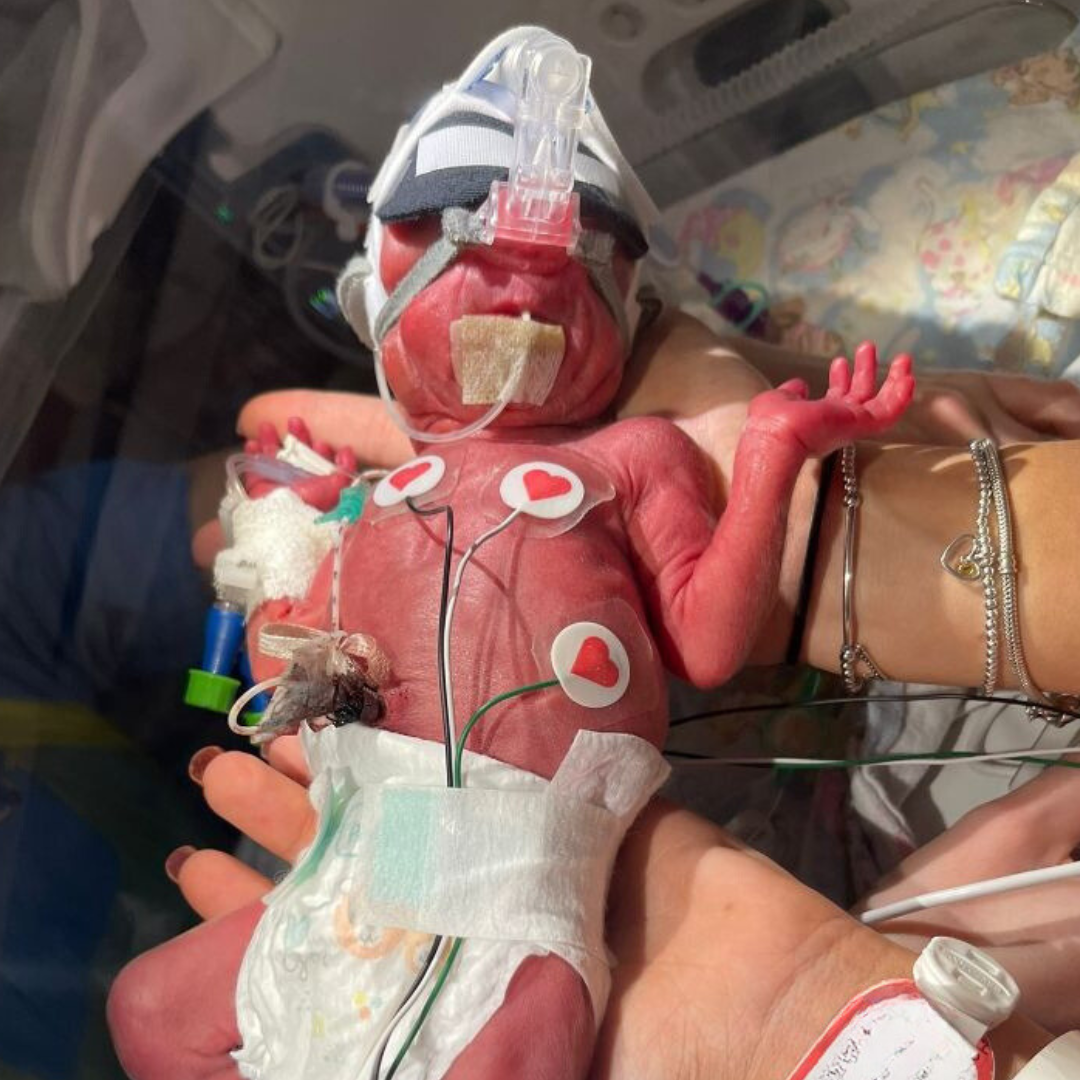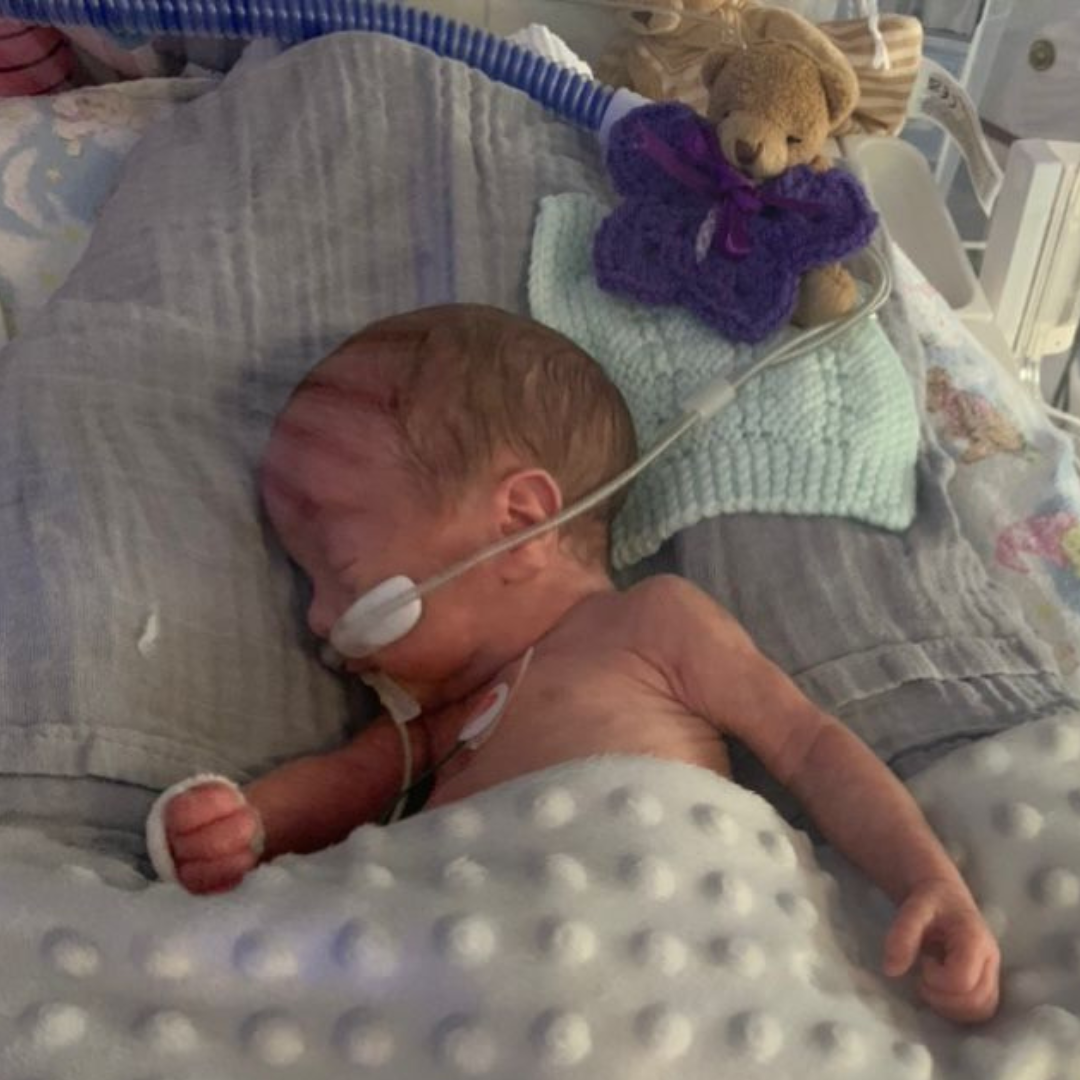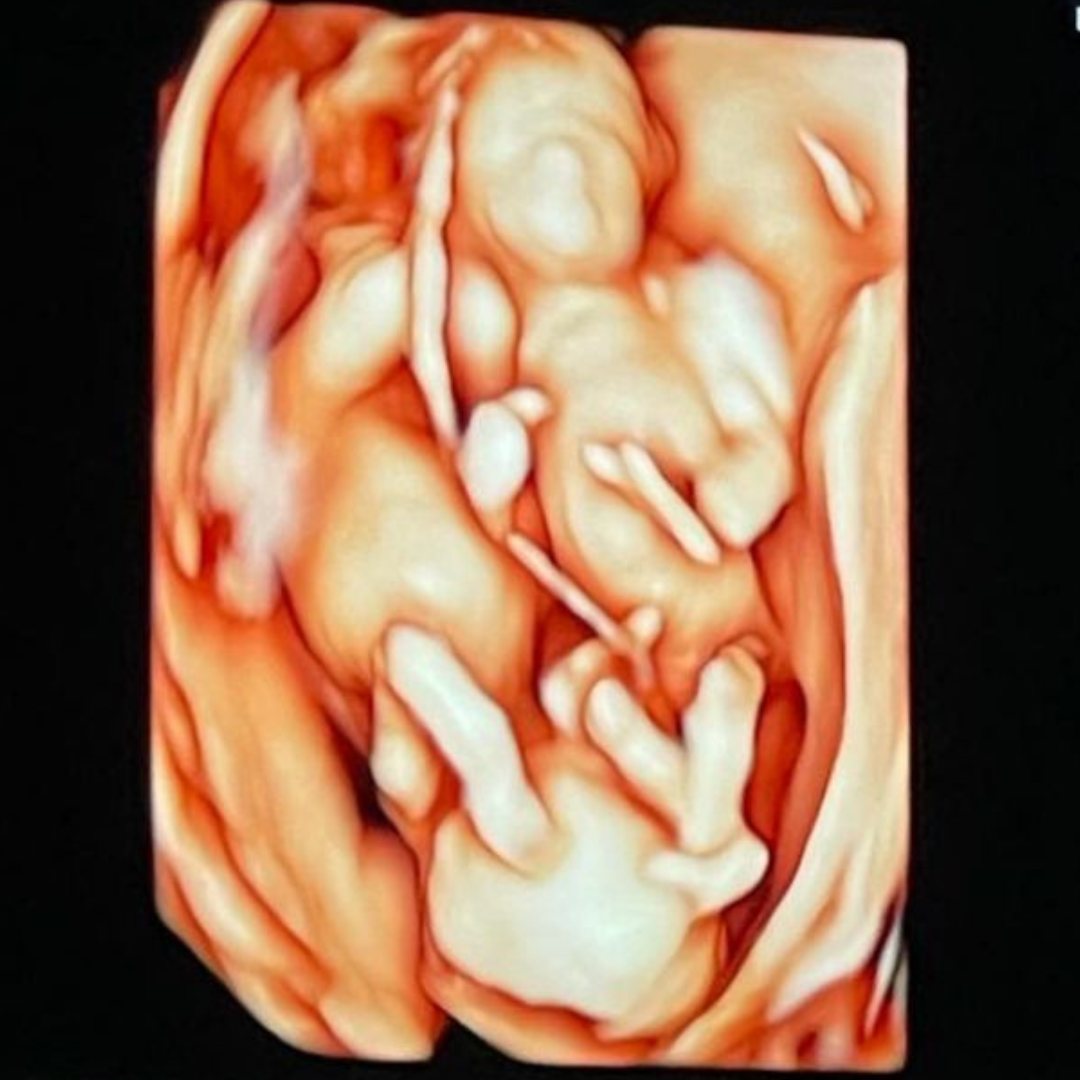Couple who endured heartache of stillborn twin praise neonatal staff for saving his brother

A couple who endured the heartache of losing one twin boy in the womb because of a rare condition have praised health care staff who saved his battling brother.
Laura Pridding and Ali Davies, from Rhosddu, Wrexham, wanted to tell their story because of the care they received from neonatal staff at Glan Clwyd Hospital.
Their twins had suffered from Twin to Twin Transfusion Syndrome (TTTS), which occurs in around 10-15% of pregnancies with twins who share a placenta (monochorionic).
The couple welcomed baby George into the world, weighing just 2lb 5oz, on January 7 this year but his brother Henry was sadly stillborn, having lost his fight six weeks earlier.
However, Laura explained how supported the couple felt as they negotiated such an emotionally and psychologically challenging time.

Overwhelming
She said: “They all came in the room, the doctors, the midwives, the anaesthetists, the nurses and explained everything. We didn’t even have any questions they were so thorough.
“They took us to theatre and gave me an epidural for the caesarean and there were five baby doctors waiting for George. There were about 20 people in the room.
“It was quite overwhelming those people were all there for you. The next thing we heard a scream – he came out screaming and all I saw was a mop of hair.
“George and Henry were born together, which was nice. I was 27 weeks and four days.”
The couple’s journey began in July last year when Laura discovered she was pregnant.
After getting pains in her legs she was found to have high levels of the hCG hormone, indicating she was carrying more than one foetus or there was an issue with her pregnancy.
A subsequent scan showed she was carrying twins and further scans showed George and Henry each had their own amniotic sack and shared a placenta – but all was not well.

Breakdown
Laura said: “We had a scan at about 15 weeks and they said they had TTTS. Because they were sharing arteries George was having more blood than Henry.
“We were referred to fetal medicine in Wrexham. At the appointment the doctor passed some tissues to me and said ‘have you heard of twin to twin transfusion’ and we broke down.
“We knew straight away what it was. They shared a placenta and shared the arteries on the placenta.”
TTTS occurs when there are abnormal connections between the babies’ blood vessels on the surface of the placenta.
This then causes blood to be transferred from one twin (the donor) to the other (the recipient).
Because the donor baby has less blood, flow is prioritised to the brain. This means other organs could be damaged.
The recipient twin risks heart problems because it has to work harder to cope with the increased blood flow.

Survival
Laura was referred to Liverpool Women’s Hospital where specialist Professor Asma Khalil looked after her.
“She said without laser treatment it would get worse and we would lose them both,” revealed Laura. “Straight away we said do it, just do it. We needed to try and do what was best for them.
“The procedure was to laser all the arteries they shared so they would both have their own blood supply. There was a risk I could go into labour or there was a 60% risk their brains could be damaged. We had to do it even though it was only 16 weeks.”
Describing the procedure as “amazing”, Laura and Ali watched on a monitor and it looked like it had been successful.
They continued travelling for scans but at 21 weeks Laura noticed a lack of movement and a later scan confirmed Henry had tragically died.
Laura continued: “I said what happens now? I’ve lost a baby but the other one is OK.”
The answer was one the couple found hard to accept. Laura had to go through the pregnancy knowing Henry had died, to give George the best chance of survival.
Ali said: “We struggled with that.”
Loss
Laura added: “I thought how am I going to walk the streets knowing I’m carrying two babies and I’ve lost one? It was horrible.
“That was the worst part for me, knowing I’ve got to carry on and try and be healthy for George when I know I’ve lost the baby.”
They couldn’t look for the first few scans after Henry died but George continued to thrive, then Laura’s waters broke on Christmas Day last year, at 25 weeks, and she went to Arrowe Park.
She was given antibiotics, magnesium for George’s brain and steroids to help his lungs during multiple visits until she was sent to Glan Clwyd Hospital on January 6 this year.
“I’d had all the drugs and we got to Glan Clwyd and they said ‘right they’re coming tonight’,” said Laura. “I was 27 weeks and four days.”
Ali, who had had to watch his partner go through a torrid time, was there when George and Henry arrived.
He said: “They said when George comes out he’ll basically be taken away. We were just expecting not to see him.
“He came out and we were expecting nothing but after a couple of minutes they said do you want to come and see him?
“I couldn’t believe how well he looked and they let me cut the cord, which I didn’t expect at all.”
From birth, George could breathe on his own with CPAP but after 48 hours he was ventilated for a day to give him a rest.
Yet he was not over his problems. He had amniotic band syndrome meaning the amniotic sack had fused to his toes.
Consultant Khalid Sultan performed a delicate, two-hour operation to remove the fused material from the new born’s feet.
Due date
Ali said: “When they called me over they said he could lose his toes. You couldn’t see them basically. Obviously, they had to cut the skin off to get him out and it looked awful.
“It was luck that Mr Sultan was there and he saved George’s toes. One of the student doctors said the operation was one of the most amazing things he’d ever seen.”
Speaking on April 3, George’s due date, Laura said: “George has been home for three weeks now and I think now it hits you because you’re on auto-pilot the whole way.
“You’ve got staff supporting you in the hospital, telling you everything is normal, things that you don’t think are normal.
“He was in Glan Clwyd’s neonatal department for five weeks and he was in Wrexham for five weeks. We travelled every day there and back. Glan Clwyd saved his life.”
The couple also praised Betsi Cadwaladr University Health Board’s specialist Snowdrop Bereavement Team who helped them deal with the loss of Henry.
Each baby was given a little Teddy and a purple butterfly. One was cremated with Henry – and George has his with him at home as a reminder of his special brother.
Laura now intends to write a book about the family’s experiences because TTTS is so rare and to let parents know there is hope after bereavement.
She said: “You’ve got to have your faith in neonatal. I suppose the book will be for all mothers, all mothers who’ve been through a difficult pregnancy or been bereaved.
“It is quite a mixed emotion isn’t it, when you’ve you’ve lost one and then you have one? You’ve got to keep strong.”
Support our Nation today
For the price of a cup of coffee a month you can help us create an independent, not-for-profit, national news service for the people of Wales, by the people of Wales.






